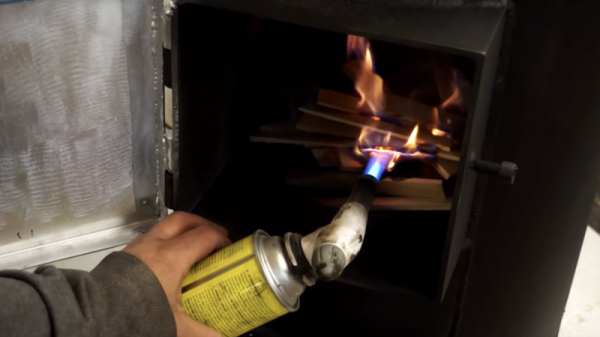Depending on the chef’s skill, many exciting things can happen in the kitchen. Few, however, grab as much immediate attention as when a piece of foil or a fork accidentally (?) makes it into the microwave oven. That usually makes for a dramatic light show, accompanied by admonishment about being foolish enough to let metal anywhere near the appliance. So what’s the deal with this metal-melting microwave?
As it turns out, with the proper accessories, a standard microwave makes a dandy forge. Within limits, anyway. According to [Denny], who appears to have spent a lot of time optimizing his process, the key is not so much the microwave itself, but the crucible and its heat-retaining chamber. The latter is made from layers of ceramic insulating blanket material, of the type used to line kilns and furnaces. Wrapped around a 3D printed form and held together with many layers of Kapton tape, the ceramic is carefully shaped and given a surface finish of kiln wash.
While the ceramic chamber’s job is to hold in heat, the crucible is really the business end of the forge. Made of silicon carbide, the crucible absorbs the microwave energy and transduces it into radiant heat — and a lot of it. [Denny] shares several methods of mixing silicon carbide grit with sodium silicate solution, also known as water glass, as well as a couple of ways of forming the crucible, including some clever printed molds.
As for results, [Denny] has tried melting all the usual home forge metals, like aluminum and copper. He has also done brass, stainless steel, and even cast iron, albeit in small quantities. His setup is somewhat complicated — certainly more complex than the usual propane-powered forge we’ve seen plenty of examples of — but it may be more suitable for people with limited access to a space suitable for lighting up a more traditional forge. We’re not sure we’d do it in the kitchen, but it’s still a nice skill to keep in mind.
Continue reading “Radio Waves Bring The Heat With This Microwave-Powered Forge”

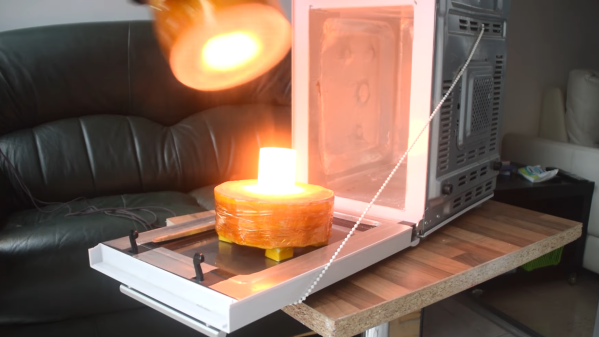
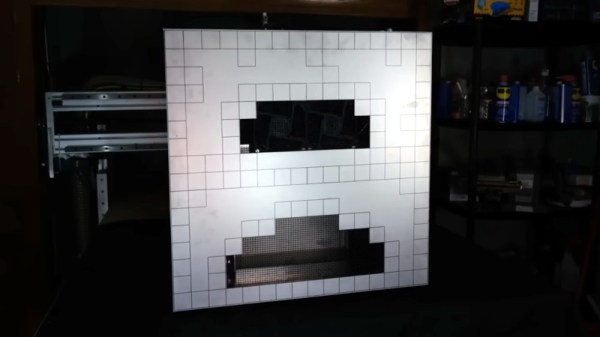
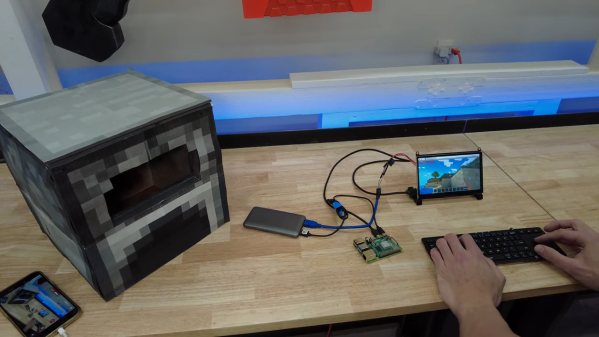


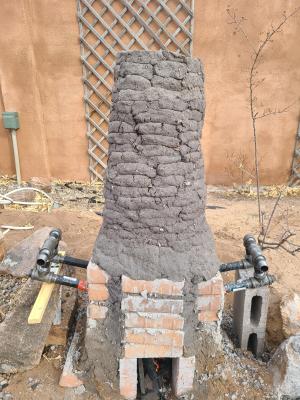 This began by collecting 150 pounds (!) of magnetic dirt from dry lake beds while hiking using a magnet pickup tool with release lever that he got from Harbor Freight. Several repeated magnetic refining passes separated the black ore from non-metallic sands ready for the furnace that he built. That is used to fire up the raw materials using 150 pounds of charcoal, changing the chemical composition by adding carbon and resulting in a gnarly lump of iron
This began by collecting 150 pounds (!) of magnetic dirt from dry lake beds while hiking using a magnet pickup tool with release lever that he got from Harbor Freight. Several repeated magnetic refining passes separated the black ore from non-metallic sands ready for the furnace that he built. That is used to fire up the raw materials using 150 pounds of charcoal, changing the chemical composition by adding carbon and resulting in a gnarly lump of iron 